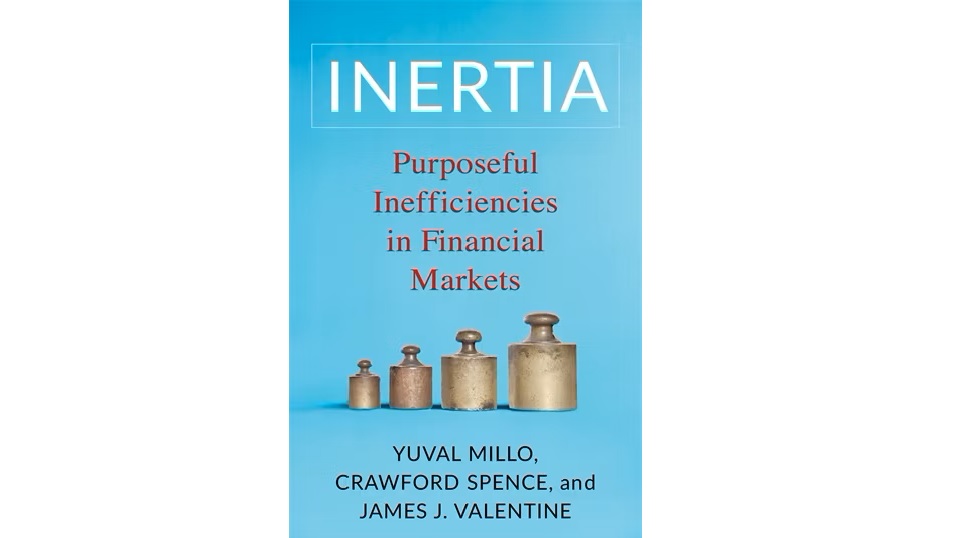
The emperor's new clothes: Most actively managed funds do not justify the higher cost for investors
Financial intermediaries play a vital role in helping to meet the demands of investors looking for financial returns. Typically, this means investing in funds, usually through an asset management firm.
But the asset management industry has a problem, at least in terms of actively managed funds.
Recent years have seen a notable shift in investment flows from active to passive funds, to a point where the volume of assets managed through passive funds now outweighs those that are actively managed. There is good reason for this.
A growing body of evidence suggests that active funds rarely beat the market, and are often outperformed by low-cost index funds.
Drawing on data from 1970 to 2001, Malkiel demonstrates that the median US mutual fund produced returns more than 175 basis points lower than returns from the S&P index, after expenses.
More recently, Morningstar’s analysis of fund performance in the US equity market suggests just one in four (23 per cent) of active funds outperformed their passive counterparts between 2010 and 2020.
This is compounded by the impact of fees. Research by Gittelsohn found that index equity funds cost an average of about 10 cents a year per $100 of assets, compared with 70 cents for active funds.
Inertia and inefficiency in financial markets
I explore this concept with my co-authors Crawford Spence, of Kings College London, and James Valentine, of investment training firm AnalystSolutions, in our new book, Inertia: Purposeful Inefficiencies in Financial Markets.
We essentially provided the active fund management industry with the opportunity to justify its existence through a series of interviews.
Fund managers tend to both believe and not believe that they can ‘beat the market’, suggesting there is a degree of cognitive dissonance.
Those in the sector said they could do a better job of protecting investments than passive funds, and that they could better factor in environmental, social and governance priorities when investing.
Some argued their performance indeed beat the market, but they were the minority, and that others were letting the industry down.
Others claimed they would come into their own during a bear market. However, we started doing the interviews in 2019 and when the COVID-19 pandemic hit, they still did no better than the wider market.
There are several reasons that this might be happening, which could give some insight into what can be done to overcome this issue.
1 The sector is inherently risk-averse
The issue goes broader than fund performance. There’s a bigger finding that the industry makes out to be a sophisticated, innovative sector that thinks outside the box.
But the reality is different. It’s a highly conservative sector, which tends to be very risk-averse. This is largely due to the asymmetric rewards that exist around performance.

As a fund manager, if you go out on a limb and you’re wrong, you’ll be blamed for that. But if everyone else is wrong too, people are more understanding.
The way the sector is set up, with incentives and career development, means it’s in the interests of fund managers not to take chances, and that’s why they end up with average performance.
2 Asset management firms are not diverse enough
We also explored if there is a solution to the current situation. We concluded that asset management companies need to improve their diversity.
Typically, these firms recruit people from similar backgrounds to their own; generally male, white and from a certain background, and even still from particular schools.
Less diversity typically leads to lower diversity of thinking, and a tendency to act the same. They need to take more risk in recruitment; to hire more women and introduce more ethnic, geographical, and social diversity.
That will challenge the way the industry works, and how funds are built, and should lead to a different system.
If they keep operating in the same way they have always done, they should not be surprised when they keep getting the same results.
3 Established markets are an easy option
This attitude can be seen in the bias investors have towards certain markets, with the US and UK dominating while areas such as Eastern Europe, South East Asia, the Middle East, and Sub Saharan Africa are seen as developing markets, despite offering significant opportunities.
There is a certain way of seeing the world and even blind prejudice, which also pushes investors towards conservative behaviour.
Adopting a longer timeframe for investments, rather than the next quarter or six months, would help with this.
However, this is likely to require changes to the way in which managers are incentivised and recognised.
4 Financial advisers are in on it too
There are also questions to be asked of financial advisers and intermediaries, who are the main gatekeepers for many investors.
These could put forward more ideas around the potential for investment strategy, and even identify interesting opportunities.
They also need to be more prepared to do something different, and not to hire the same people and organisations they have always done.
But often they too are motivated by the same incentives that encourage conservatism as the fund managers, and can also find it useful to have someone else to blame for poor performance.
5 Investors are also too comfortable
In some ways, we should expect an underperforming market to eventually fail.
However, investors like the idea of a 'hero narrative', where people can beat the market for them, and are reluctant to take responsibility for managing investments themselves.
There are also some potentially troubling consequences in terms of wealth distribution and corporate governance should significant volumes of actively managed funds move into more passive arrangements.
One area where there has been an impact in recent years is around fees, which have come down significantly.
These have also become more transparent, splitting out how much people are paying for research and how much for transactions. This could be a healthy market reaction to a very slow decline.
Both fund managers and financial intermediaries should use this as an opportunity to think about what they can do differently, so they can embrace new opportunities and innovation and explore new investment opportunities.
The answer is not for active fund management to fail, but for the market to work more effectively.
Inertia: Purposeful Inefficiencies in Financial Markets, is available to buy from Columbia University Press and Amazon.
Further reading:
The flaw in the data that led corporate bond investors astray
Algorithmic inertia: The flaw that made Moody's blind to the financial crash
Why investors love state-owned enterprises
Are female CFOs more ethical than men?
Yuval Millo is Professor of Accounting and teaches Financial Reporting and Financial Statement Analysis on the MSc Finance, MSc Business and Finance, MSc Accounting and Finance, and MSc Finance and Economics.
Unlock the power of financial literacy with the part-time executive education programme Finance for Non-Finance Leaders at WBS London at The Shard..
Discover more about Finance and Markets. Receive our Core Insights newsletter via email or LinkedIn.




 X
X Facebook
Facebook LinkedIn
LinkedIn YouTube
YouTube Instagram
Instagram Tiktok
Tiktok